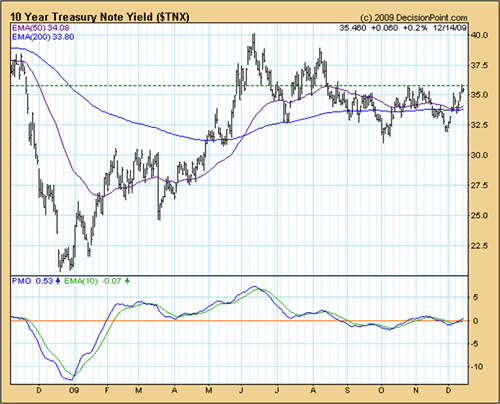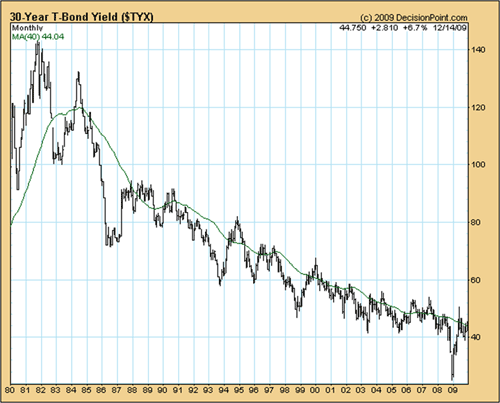
Last December, the yield on the 10-year Treasury bond fell to 2 percent, the lowest level in 40 years. The financial and economic crisis had investors heading for a safe harbor … and Fed members panicked. Deflation was the buzz word of the time.
If market forces had been allowed to take over and purge the system of all the imbalances, malinvestments, and excesses that characterized the bubble years, a deflationary wave would have swept the world. And after this sharp and deep cleansing process, a new healthy recovery would have begun.
But Washington politicians, the Fed and their international peers did not want a painful, although effective, market solution. They thought they could do better.
They believed they had better information than markets. They thought their judgment was superior. And they still think they are the masters of the universe.
For now, they may have prevented a quick and severe deflationary crisis. But we’ll all pay a huge price for our policymakers’ arrogance with the next surge of inflation …
Most modern economists think of inflation as “the change in the level of prices of a basket of goods and services.” However, this definition tells us nothing about the causes of these price changes.
But here is an older definition that does: “Inflation is a rise of money and credit.”
According to this traditional definition, changes in the level of certain prices are a symptom of more money and easy credit … a causal inflationary policy.
I stick with this classical definition because I like to know the reasons behind observable data. It’s very helpful in understanding what has been going on during the last few years. And it enables me to make some forecasts about what will happen next.
Two Historical Observations of Inflation …
Every time we’ve had a big jump in inflation — and there have been many occasions, especially during the 20th century — two common characteristics appeared:
First, there was fiat money … money that can be endlessly proliferated by the government.
Second, there were huge public budget deficits that were largely financed by money creation.
We’re experiencing both characteristics today …
In fact, governments around the world are built on discretionary paper money regimes. And their answer to the Great Recession has been a debt and spending binge, at least partially financed by money creation. They even created a fancy and hard-to-understand term for this policy: Quantitative easing.
So it’s probably not too far-fetched to come to the conclusion that we have an inflationary monster in the rearview mirror, and it’s quickly gaining ground on us each day.
Finally, the Bond Market
Will Tell Us the Truth …
Times of strongly rising prices are always accompanied by rising interest rates — at least as long as free markets are allowed to operate. If we are entering a time when the current inflationary policy leads to rising prices of goods and services, bond yields will have to start rising, too.
As I said at the beginning, and you can see it on the chart below, the yield of the 10-year Treasury bond hit a low of 2 percent in December 2008. By June, it had doubled to about 4 percent. Then it retreated somewhat.

And now it looks like this correction may be over. All that’s needed to confirm this assessment is a small continuation of the uptrend of the past two weeks. If yields can rise above the October-high of 3.58 percent, they’ll signal the end of this consolidation and a continuation of the medium-term uptrend that began in December 2008.
The Long-Term Chart
Shows a Very Old Trend …
Have a look at the chart below showing the yield of the 30-year Treasury bond since 1980. Here you can see the long-term downtrend in yields that boosted financial assets and the banking industry from 1981 until 2008.

The spike lower in December 2008 may well turn out to have been the low point in this 28-year long trend. However, we haven’t seen a clear trend reversal yet or the establishment of a new secular up trend.
In the past, interest rates rose as an answer to unsound fiscal and monetary policies. The last time was from the early 1960s until 1981. And the possibility of this happening again relatively soon is obvious.
Best wishes,
Claus
This investment news is brought to you by Money and Markets. Money and Markets is a free daily investment newsletter from Martin D. Weiss and Weiss Research analysts offering the latest investing news and financial insights for the stock market, including tips and advice on investing in gold, energy and oil. Dr. Weiss is a leader in the fields of investing, interest rates, financial safety and economic forecasting. To view archives or subscribe, visit http://www.moneyandmarkets.com.
